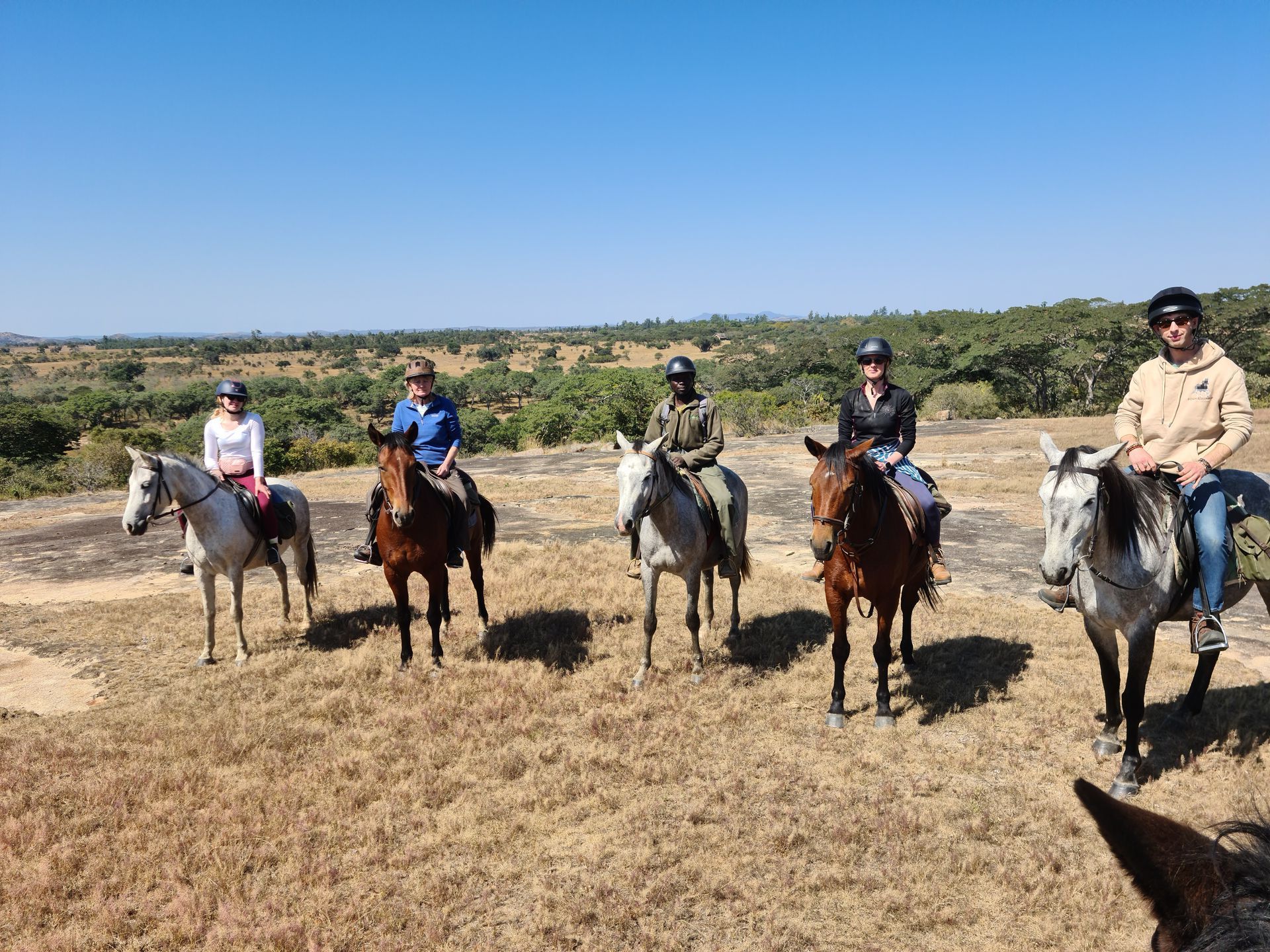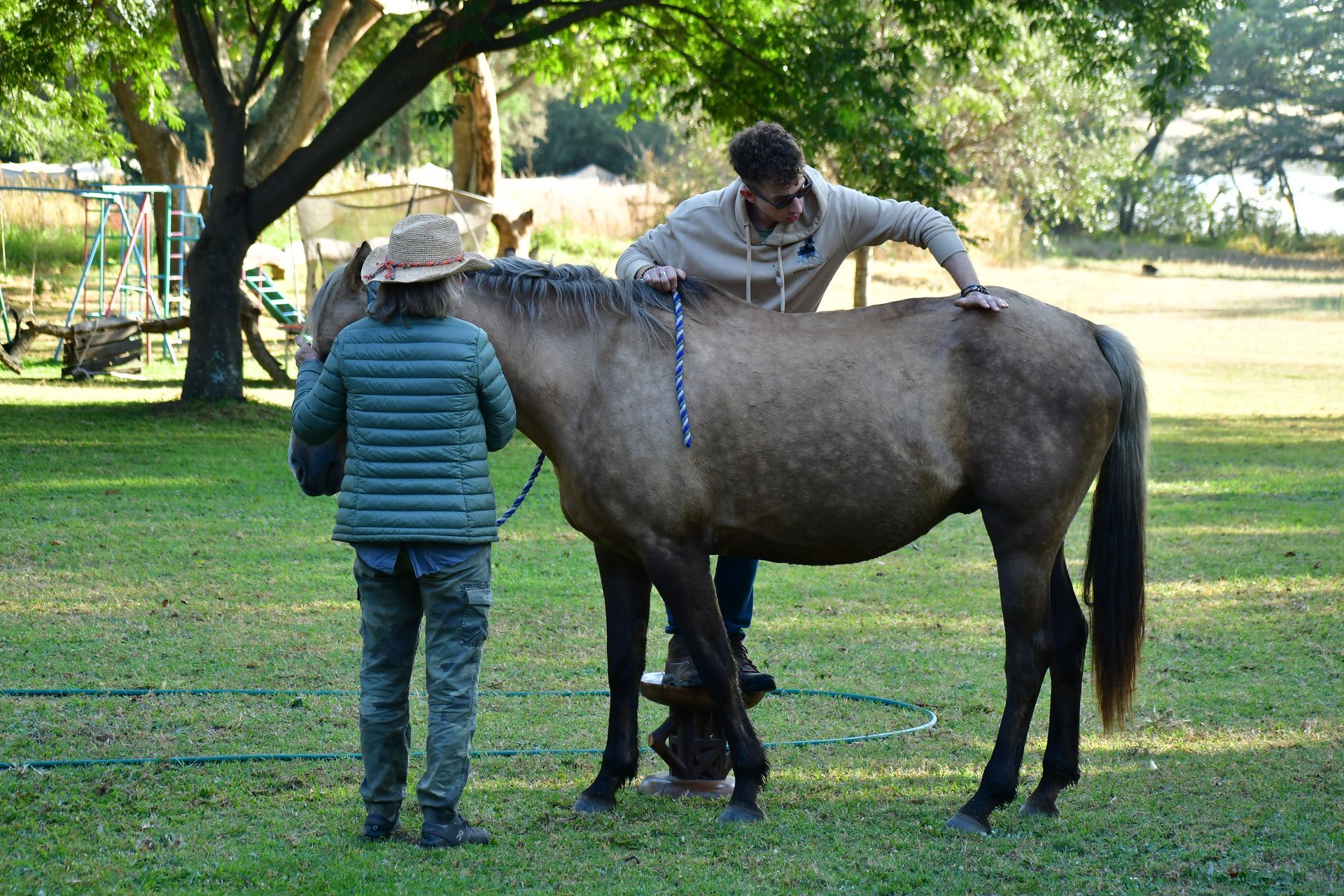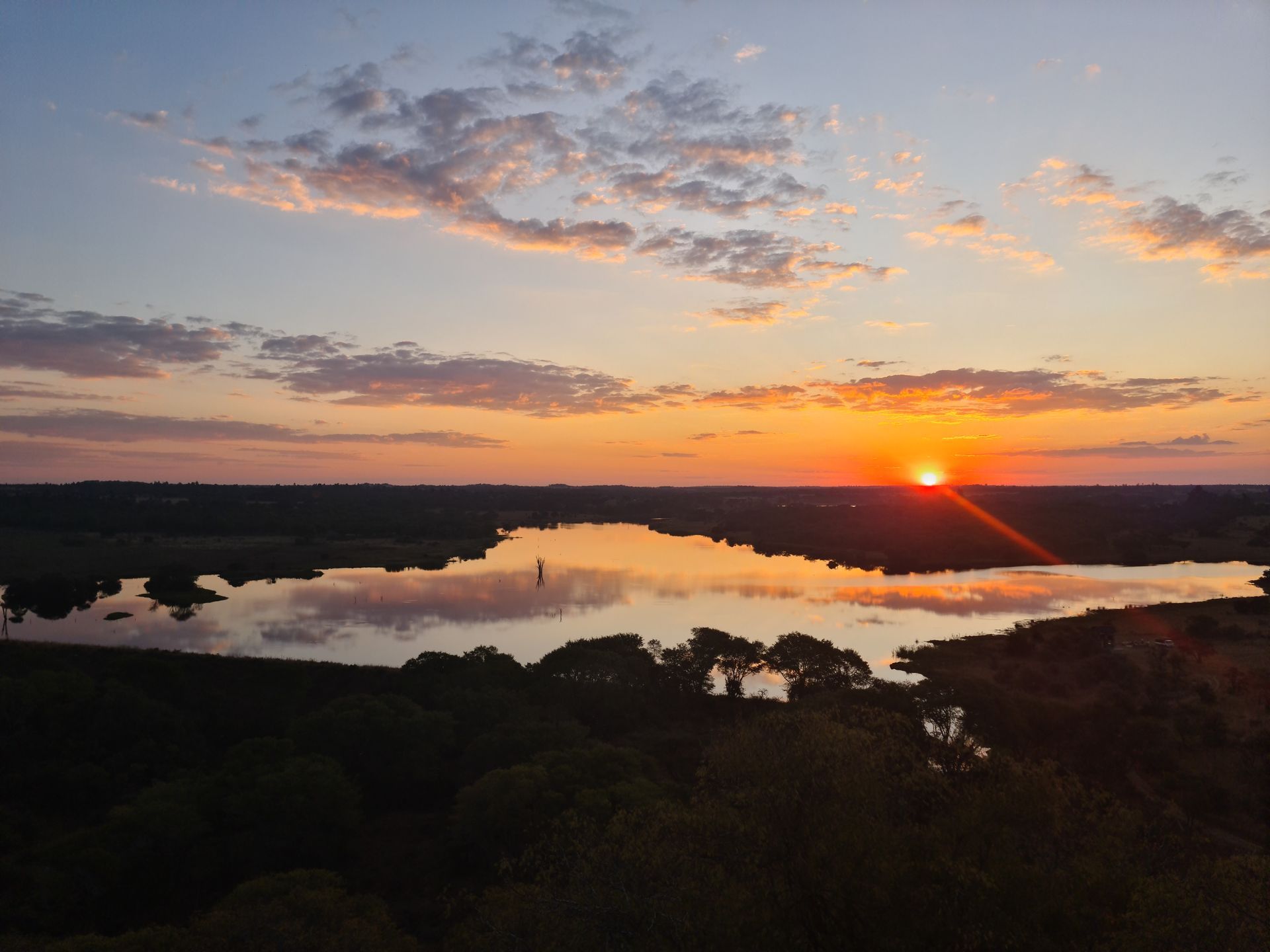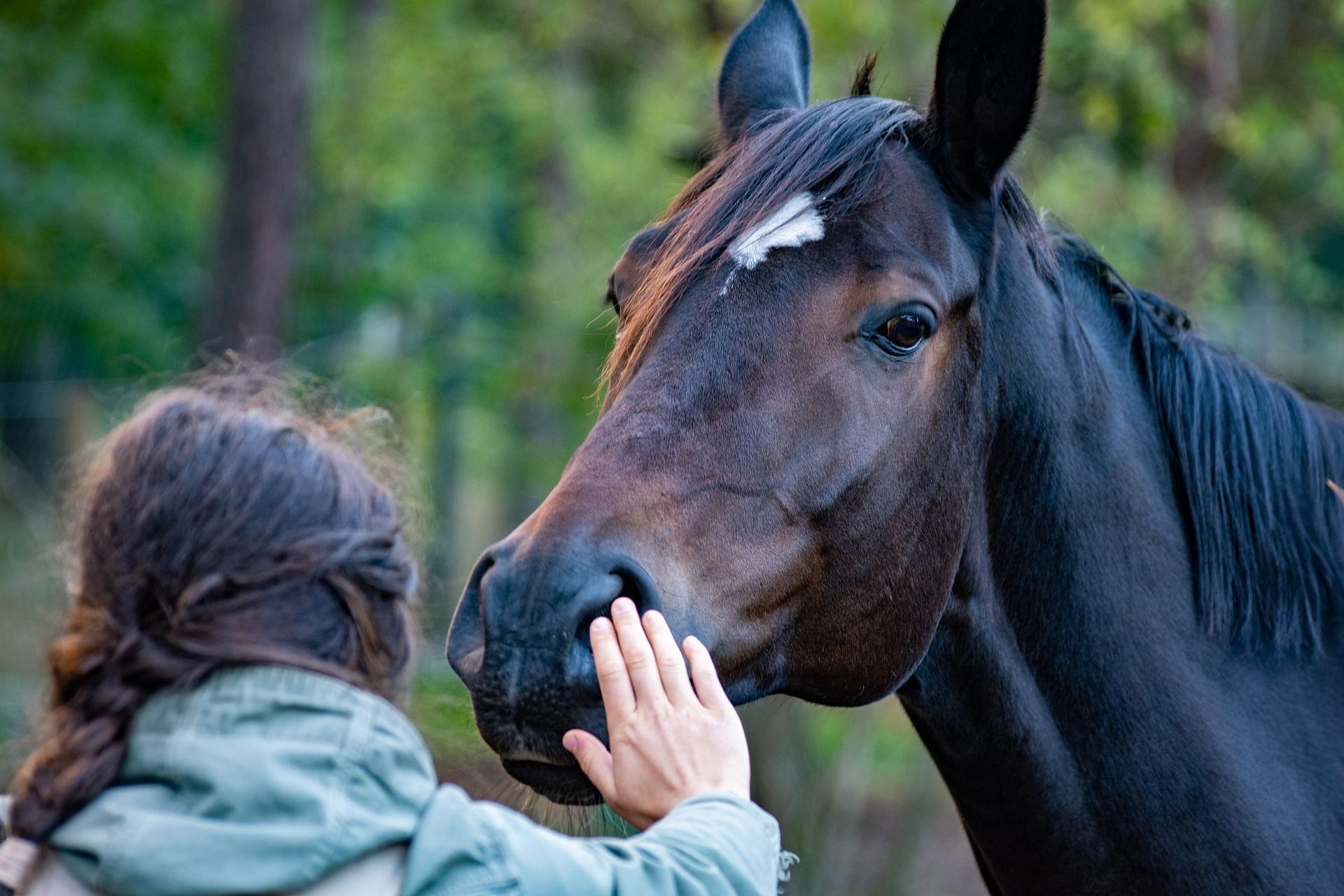Nomadic Adventures; The Zimbabwe Diaries
The only man I envy is the man who has not yet been to Africa, for he has so much to look forward to.”
- Richard Mullin
So, after two years in the planning, we finally made it to Zimbabwe to partake in an equine and wildlife conservation project!
Two years ago in the midst of the pandemic, I wanted to organise something special for a group of my clients and those interested in working with me after an unsettling few years; a little something to look forward to where we could make a difference; this combines my passions of horsemanship, conservation and wildlife all in one!
For the week we had planned a personalised itinerary where I would be facilitating daily clinics and workshops with the bush horses as part of the project; aside from this, we will be getting hands on with important aspects of conservation including assisting with their Black Rhino and Elephant conservation programme on the reserve!
Now I am back, the time spent in Zimbabwe was such an incredible experience, how could it not of been!
I would class myself as very fortunate to visit a country like Africa again, especially after so much uncertainty over the pandemic, though most of all, to be able to share how special Africa is with such an awesome group of people who wanted to join me there, for horsemanship and conservation.
We really could not of asked for better company, so thank you to all who came along!
Throughout this blog, you will find snippets from my journal, social media and aspects of what we all got up to working with the bush horses in Zimbabwe, from teaching the early morning clinics and the accessibility of training, to how horses benefit game management conservancies.
As the week heavily focused around conservation, I will naturally be including some of the conservation roles we got involved in to help raise awareness of the trails and tribulations the natural world still continues to face.
Happy reading y'all!

(Above, Sunrise over Castle Kopje) Roscatography ©
There is nothing like getting to know your horse in the deep end.
The first morning with the equines on the conservancy was a short introduction with the horses we would have for the week, before needing to head out in to the wider area to round up 400 head over cattle in to holding areas known in Africa as ‘bomas’ for branding.
The cattle are rounded every few weeks for dipping (for parasite control) and is needed to be done on certain days. The horses on the conservancy play an important role in management of the cattle, allowing access to gather them from areas inaccessible in a vehicle, but also to cover the ground needed, as the herds spread in to smaller herds throughout.
Good cow work is slow and steady. I have done a little cattle work in the United States before, and some over here with sheep (it works exactly the same!) and have always enjoyed the practicality of the horsemanship involved to do the job, and ensuring the horses have the set-up to be able to achieve that level of practicality.
Here is the view through the ears of Bundu, taking up a sentry position; we often kept flank of the formation when moving the cattle, and here we are just creating a presence so the cows continue their progress in to the bomas.
Though I would of preferred for the group to have a little more time to get to know each horse and their responses, the time spent out in the bush rounding-up certainly gave us our heading of what each horses needed, and what to work on over the coming days.

(Above, Cattle drive through the ears of Bundu, Below, the Zimbabwe clinic group) Roscatography ©

One thing I took away from Zimbabwe was the affirmation of how fortunate how very fortunate we are here in the UK.
It is very easy for us to take what we have for granted, not truly realising just how accessible things are to us, and our horses; it does make you begin practising a little more gratitude, something I feel we all should do.
Not everywhere is fortunate to have the accessibility what we do have on our doorstep here in the UK, making the access to certain services or equipment limited and difficult; coaches and trainers, veterinary care, tack stores, dentistry and postal services!
When I qualified as an equine sports and rehabilitation massage therapist, I trained to do so to add another skill-set to my list, advance my knowledge in biomechanics and to be able to work through muscular soreness as part of a physical or behavioural rehabilitation plan, very beneficial to ‘troubled’ horses whose trust I had earned.
While in Zim, this became a welcome benefit to the horses we shared the time with.
As we had the horses stay with us on the lodge grounds of the conservancy for a few nights, it gave me time in-between conservation projects to assess and treat specific areas of soreness and tension that some of the horses were experiencing.
Muwubah, pictured with me, was initially quite reactive around her trapezius thoracis and corresponding muscles on initial palpation of the area.
After gently working to begin releasing the tension in the area, thus allowing me to get a little deeper into the areas needed, resulting in some beautiful changes in her facial expression; for the better!
The following day, Muwubah’s difference was exceptionally noticeable both in carriage, movement and responses under saddle; bearing through the mozzie bites on my legs was definitely worth it!


(Above Left, Muwumbah waiting for a tension release, Above Right, Early AM clinic) Roscatography ©
A school or ménage is but a luxury.
A prime principle in the way that I work is to ensure each horse receives the set-up they need.
For that, I don’t need a fancy arena, just a space that the horse deems as a comfortable space to be able to offer relaxed focus, where we can establish aspects of their education before presenting them with different situations.
For me I just need a workable space and good ground, so a lakeside setting in Zimbabwe was a sure fire place for some ‘snack-box clinics’ and to introduce some new exercises!
The first few days out in the bush with the horses had given me a good indicator of what each horse in the group would benefit from, what we could begin to introduce as a group and what we could leave as simple, effective exercise to be easily practised when we left.
The main areas that presented themselves for improvement was independence, softness, suppleness and body manoeuvrability; each horse was really going to benefit from some specific focus on these areas, which made putting together exercises for group teachings easy!
We used the natural landscape and tree coverage as focus obstaces to work around, gaining increasing distance from each other while beginning to softly layer in specific rein and leg cues as the focus from each horse became more attuned to their rider.
We further progressed this by looking at how to effectively help the horse understand, and utilise their ribcage without bracing, softening to the aids, and at times promoting the beginning of a little leg yield for some.
The difference in the horses was tangible; the change in the movement of each horse was softer, their minds more connected and their responses lighter; the horses that had received bodywork treatments the day before, specifically Muwumbah, showed noticeable improvement in her entire movement.
These responses and mindset continued when we rode out into the bush, resulting in some of the best rides we had during our week in Zim.
These were some great, easy to execute exercises we could leave the horses with, and what we could easily carry on tinkering with when out in the bush.

(Above, A bodywork session with Dindu, who was presenting multiple physical issues) Roscatography ©
The final morning with the horses in Zimbabwe was for me possibly the most rewarding; you can probably see why!
On the final day our group split in to two; whilst a couple went off to have a final ride in the bush, the second half of us stayed behind to observe, photograph and soak up the African sun whilst I assessed and treated a few of the horses that had been mentioned to me through the week.
I muse from time to time about how the manifestation of tension presents itself, the emotional to physical or emotional to physical; on this day, I had both sides of the coin.
The palomino pictured, Dindu, had been presenting some unwanted behaviours under saddle, specifically so at the canter. Without too much time observing it was noticeable that Dindu had exceptionally little movement of the pelvis, and on palpation, was presenting soreness in this area, as well compensatory muscles
When I am assessing a horse, be that for behavioural or bodywork, I always look at their static and dynamic presentation; how a horse holds themselves and how a horse moves can offer helpful indicators for us to help them.
Dindu was also ‘roached-back’, known medically as Kyphosis; this is where part of the spine, more commonly in the lumbar region, creates an upward arc, which could be present due to congenital reasons or due to a direct or indirect injury.
I always get so stoked seeing the changes in some horses after a treatment; the improvement in muscle tone was vastly different, and more importantly, I was able to loosen things off to help increase mobility, not just through his hindquarters, but his overall carriage.
We finished this session by discussing potential causes, bush-savvy exercises that can be done to increase mobility and begin to build correct muscle tone as part of a rehabilitation plan.
Josie on the other hand, the little bay I am pictured with, was manifesting all her physical tension through her stored emotional trauma.
She had not had the most pleasant of lives become coming to the conservancy, and there was still blockages of her previous life still with her.
For Josie, who has never been handled by another male as her association with them is not great, allowed me to share space with her and do some light touch work with her to promote a little relaxation, combined with some energy work.
Primarily for Josie, we talked about how to adapt body language in response to her signals to allow her to feel heard, including a number of exercises to help begin to downregulate her nervous system which is currently stuck in a holding pattern; a mid-way between the two.
We finished the morning with tea and rusks on the veranda whilst we watched horse after horse (all 16!) coming racing around from the stables to enjoy their time on the open garden; the size of which we would refer to as a paddock!

(Above, Open grassland on Bundu, Below, Sunrise sighting of a female Giraffe)

Naturally, a huge focus on my reasoning to organise a trip to Zimbabwe was to focus on conservation work, alongside work with the equines.
Conservancies and National Parks in Africa face many of their own trials and tribulations, yet our equine friends are fast becoming an invaluable addition to conservation management and the fight against poaching.
Any one conservancy can be vast in size and varied in terrain, making certain areas practically inaccessible to vehicles and time-consuming to be reached on foot by ground crew. The addition of horses to conservation management allows more efficient use of time and resources by covering these large areas within a reserve in a shorter space of time.
This enables a more intimate way to monitor ‘natural behaviours, assess specific individuals and approach and monitor the health of wildlife who are naturally sensitive to human presence whilst effectively looking for any signs of illness or snaring.

(Above, Monitoring cheetah behaviour on foot) Roscatography ©
Wildlife across the world face relentless challenges due to habitat degradation and rising global temperatures, the result of human over-population and excessive, unsustainable consumption of the planets natural resources. Africa is a place where some of the far reaching effects are being most obviously seen in the form of failing crop yields, wildlife conflict, poaching and droughts; Eastern Africa is currently experiencing their worst drought in over four decades. To an an already poverty-stricken population, the failing of seasonal rains disrupts crops and ecosystems, causing 1000’s of animals to die as a result, or displacing them in the search for food and water, often brining them in to conflict with people, communities and livestock.
I have been involved in multiple conservation projects in Africa over the years, with a common theme each country continues to face is that of poaching, the biggest threat to wildlife populations. The reservation we were based on focuses on both Black and White Rhino breeding, therefore a large part of our work there was to monitor behaviour, track and health check the individuals.
To date the conservancy has been responsible for the reintroduction of 12 wild Rhino in to wider wilderness areas throughout Zimbabwe since the 1980’s, but to do this each Rhino is allocated their own armed guard.
Poaching in Africa is a complicated subject, both on understanding why it happens and how to effectively stop it. Wildlife are poached for their meat, skins, tusks and horns that fuel the illegal Wildlife Trade on the black market, predominantly exported to East-Asian countries where back in 2022 1kg of Rhino horn could fetch $65000 USD.; a horn that is made of keratin, the same as our hair, fingernails and horses hooves!
Throughout Africa, Lions now number some 20,000 individuals occupying 5% of their historic range. Cheetah populations are below 7000. In South Africa alone, which sustains the largest numbers of Rhino, one is killed approximately every 8 hours. Poaching numbers have decreased over the past two years, though is that due to increased security or the decline in overall population?
Education is one of the best forms of defence against the problems faced. It is easy for people to sit in an armchair and say what should be happening when they are not dealing with the daily struggles of a developing country, yet are in up-roar over the reintroduction of Beavers in to the rivers in the UK. Involving local communities in seeing the benefits in protecting their local wildlife and finding them employment within that sector, bringing them in to the fold I feel would work wonders to begin to find sustainable, harmonious solutions to many of the problems faced for humans and wildlife.

(Above, Health checking wild Black Rhino, Below, The view from castle Kopje) Roscatography ©

There is something about Africa that gets under your skin; it changes you, for the better.
Our time spent in Zimbabwe had left us all with an experiences that will remain vivid in our memories for a lifetime, knowing we collectively had been able to contribute something valuable to the horses on the conservancy, and something much bigger.
With a new appreciation for what we have with our horses back home, it naturally stirs up time for reflection. For me, the time in the bush gave me chance to re-connect with myself, to realise that the moment you are in is the one that matters, and that is where you can always do the most good.
If you can make a difference in the world and do that from the back of a horse, then what better place is there to be?
Be sure to keep an eye out for the October 2023 edition of Horsemanship Journal
(horsemanship-journal.com)
for my full written article on our time in Zimbabwe!









